Agnes Scherer, « Stargazing Masks », Paris
« Stargazing Masks »
a solo show by Agnes Scherer
The great thing about celebrations, in all their forms, is that they offer us the opportunity to become, for a given period of time, a collective body.
Like theatre or carnival, celebrations enable us to redefine ourselves, to play other roles, to mask ourselves and become part of a troupe or procession. Celebrations allow us to let go of our identities and the burdens that come with them. Suspended above the systems and orders that govern societies, we can joyfully embrace different processes of dissociation and begin new narratives, stories that often set us free.
Then, inexorably, the party ends, the masks come off and the joy collapses. Agnes Scherer’s new sculptural installation, presented in the exhibition Stargazing Masks, is part of this movement, that of a post-event time, a moment filled with fatigue and disorder.
Next to a broom whose usefulness we may question, we see a number of objects and pieces of evidence on the floor that bear witness to the festivities that have taken place: a champagne bottle, vinyl records, souvenirs from past holidays, dead leaves as party decorations and a few fragments of the artist’s reproduced body. The perfect decorum for disenchanted mornings after. Here, the fragments of images and objects created by the artist are like rebuses of a fragmented world, where figuration as an image of the world is exploded because it is confronted with the impossibility of transcribing the crises, impasses and dramas of the present time. The images are mowed down, whose double meaning in French signifies both broke and disappeared. Or as Agnes Scherer would say, what is presented before our eyes is ultimately nothing more than “the disintegration of the celebration of figuration.”
But on closer inspection, we also notice, amidst all this rubble of dreams, fortune cookies and mobile phones displaying star charts on their screens.
If we follow the thread of the story inspired by contemplating this scene, everything seems to indicate that the characters or forces present wanted, during the “celebration,” to know more about what the future held in store for them. In these moments of celebration, the experience of the present moment is lived with such intensity that doubts about the future never take long to reappear. Attempting to read the future has been a habit of human societies since ancient times, and human groups have never ceased to use the sky as a space for projections, interpretations and narratives. However, the end of the 19th century, with its technological discoveries and obsession with progress, marked the end of dreams and myths.
The time has come for rockets and satellites, carrying with them galaxies, the unknown and the freedom of our fantasies. Belgian painter James Ensor himself proclaimed the end of the stars with his famous 1888 engraving entitled Stars in the cemetery. But the end of starry skies is not just a symptom of our light pollution or the replacement of shooting stars by Elon Musk’s toys, nor is it merely the destruction of a mental and chimerical place dedicated to welcoming the spirits of the departed. No, in reality, the disappearance of the stars keeps us grounded, immobile, stuck in a present that never passes, a clammy melancholy, soaked in the blood of wars. Without sky or stars, with no future to imagine, no collective narratives to share, souls remain on the ground, mired in sticky, foul-smelling fuel oil, filtered through rolling news and populisms with a new style.
When talking about this exhibition, Agnes Scherer explained to me that she envisioned it as a kind of purgatory, a place where notions of pleasure are destroyed and where the end of a cycle is marked. This is likely for the best, as it is by giving shape to this situation that we can collectively come together and reflect on the future stories we would like to write, the masks we would like to wear, and the place from which we would like to gaze at the stars.
Margaux Bonopera
—
Agnes Scherer (born in 1985, Germany) lives and works in Salzburg and Berlin. She studied painting at the Kunstakademie in Düsseldorf with Peter Doig and Enrico David.
In 2026, Scherer will have two solo exhibitions at Salzburger Kunstverein, Salzburg and Nicoletta Fiorucci Foundation, London.
Previous solo shows include Sadie Coles HQ, London (2024); Meyer Kainer, Vienna (2024); ChertLüdde, Berlin (2024); Kunst Halle Sankt Gallen (2023); Heidelberger Kunstverein (2023); PAGE (NYC) at Bel Ami, Los Angeles (2023); Sans titre, Paris (2022 & 2020); PAGE (NYC), New York (2022); Kunstverein für die Rheinlande und Westfalen, Dusseldorf (2021); Cabaret Voltaire, Zurich (2020); Horse & Pony, Berlin (2019); Philipp Haverkampf, Berlin (2019).
Agnes Scherer’s first operetta “Cupid and the Animals”, was awarded the Nigel Greenwood Art Prize in 2015 and performed in, among other places, the Museum Ludwig in Cologne (2017) and TRAMPS in New York (2018). In 2019, her second elaborate work within this format, “The Teacher”, was presented by Kinderhook & Caracas in Berlin, at Cabaret Voltaire, Zurich (2020) and in Italy for the festival ART CITY Bologna (2023). Also in 2020, Scherer presented the first part of her third operetta project “The Salty Testament” at 1646 in The Hague. The artist’s narrative installation “The Very Hungry” at the Berlin project space Horse & Pony was granted the Berlin Art Prize (2019).
Recent group exhibitions include the 12th SITE SANTA FE International, Santa Fe (2025); Frac Île-de-France, Paris (2025); Frac Champagne-Ardenne (2025); Temnikova & Kasela Gallery, Tallinn (2025); Maison Populaire, Montreuil (2024); CAPC Musée d’art contemporain de Bordeaux (2023); Lore Deutz - Atelierhaus Kunstwerk Köln e.V., Cologne (2022); CAL (Centre d’Archive Laïque), Charleroi (2022); Kinderhook & Caracas, Berlin (2022); Petzel Gallery, New York (2021); Kunstverein Düsseldorf, Düsseldorf (2019); Casa Cristea Schneider, Berlin (2019); TRAMPS, New York (2018); Museum Ludwig, Cologne (2017); Kunstmuseum Solingen, Solingen (2015); Künstlerverein Malkasten, Düsseldorf (2013).
Agnes Scherer’s works are featured in the permanent collections of important institutions and museums, including Moderna Museet, Stockholm; The Long Museum, Shanghai; FRAC Champagne-Ardenne, Reims; Sigg Art Foundation; KOLUMBA Museum, Cologne and Kunsthaus NRW Kornelimünster, Aachen.
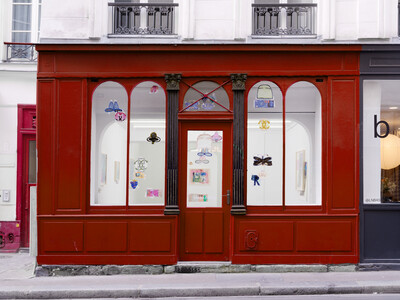
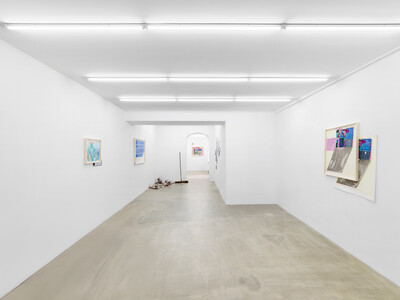
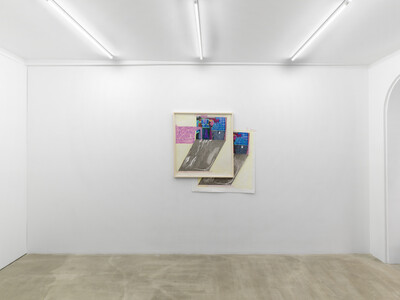
Agnes Scherer, Rain in Giverny 2, 2025, fully light resistant ink on paper and Chinese rice paper imitating tape, 81.5 × 74.5 cm (unframed), 87 × 80 cm (framed), unique
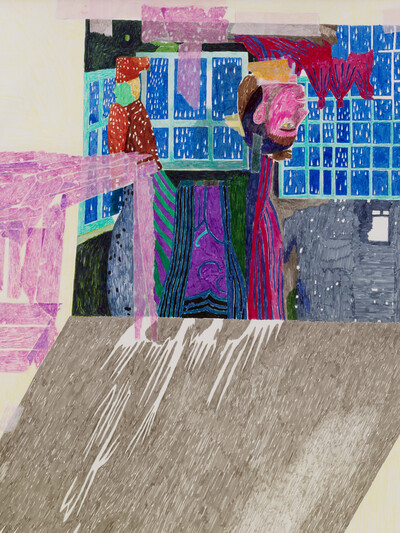
Agnes Scherer, Rain in Giverny 2 (detail), 2025
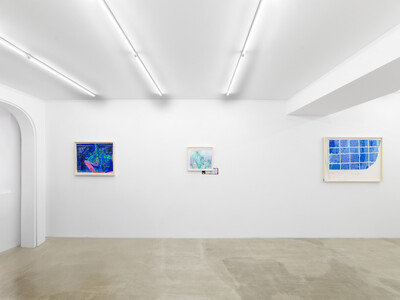
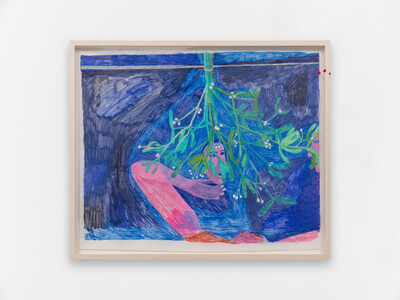
Agnes Scherer, Masks under a mistletoe (nocturne 2), 2025, acrylic and fully light resistant ink on tracing paper, 57.5 × 69.5 cm (unframed), 63 × 74.8 cm (framed), unique
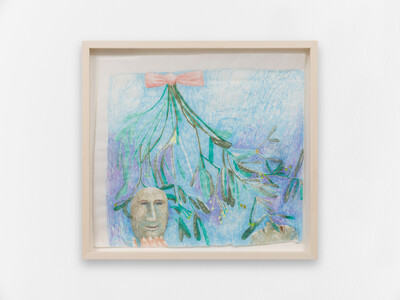
Agnes Scherer, Masks under a mistletoe (diurne with a bow), 2025, fully light resistant ink on Chinese rice paper imitating tape, 38.5 × 42.5 cm (unframed), 44.5 × 48 cm (framed), unique
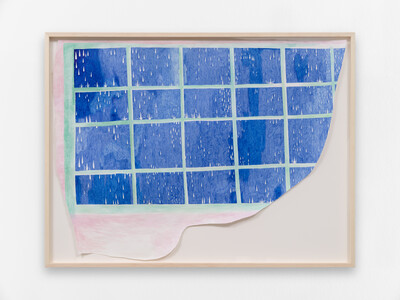
Agnes Scherer, Rain in Giverny 1, 2025, fully light resistant ink on paper, 77 × 102.5 cm (unframed), 82 × 108.5 cm (framed), unique
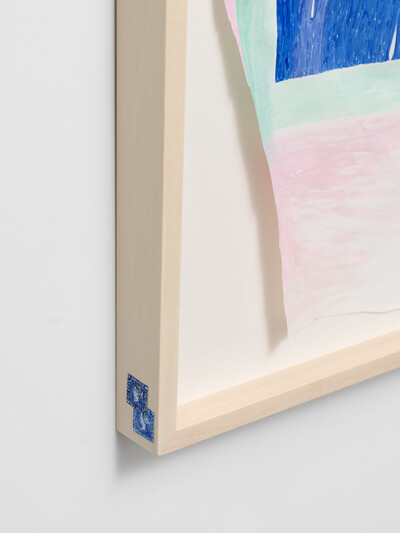
Agnes Scherer, Rain in Giverny 1 (detail), 2025, fully light resistant ink on paper, 77 × 102.5 cm (unframed), 82 × 108.5 cm (framed), unique
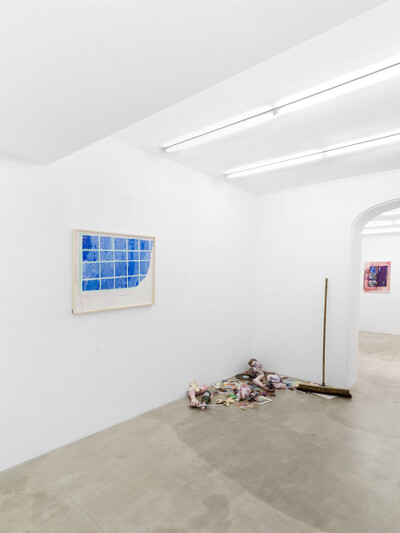
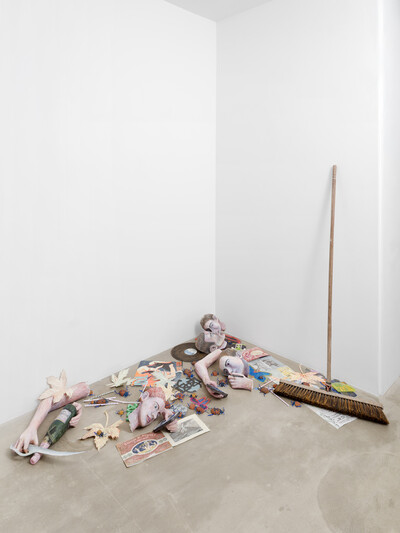
Agnes Scherer, Stargazing Mess, 2025, mixed media installation, variable dimensions, unique
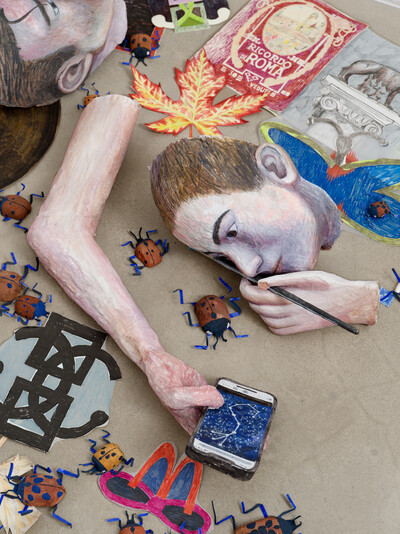
Agnes Scherer, Stargazing Mess (detail), 2025
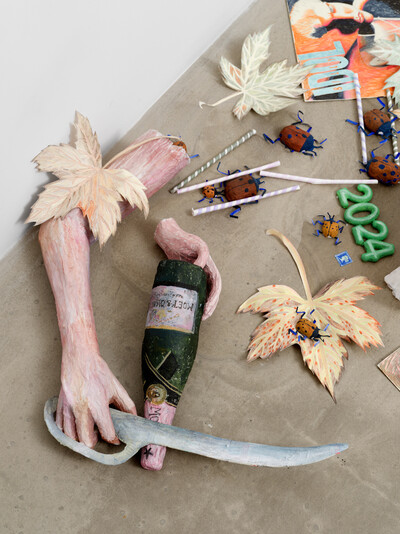
Agnes Scherer, Stargazing Mess (detail), 2025
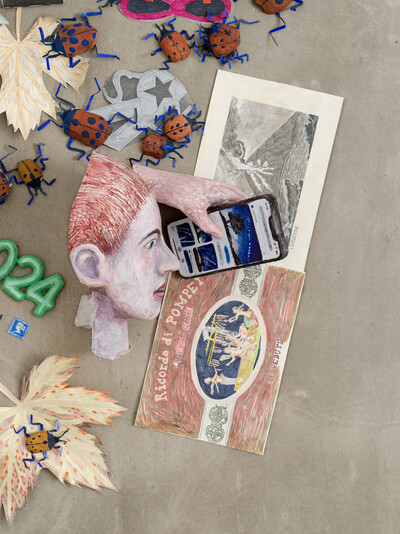
Agnes Scherer, Stargazing Mess (detail), 2025

Agnes Scherer, Stargazing Mess (detail), 2025
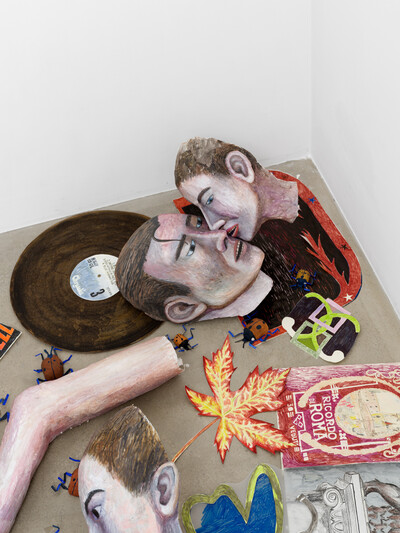
Agnes Scherer, Stargazing Mess (detail), 2025
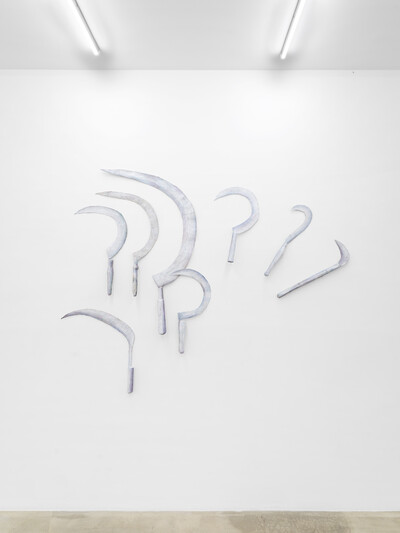
Agnes Scherer, For moonless nights to come, 2025, paper, acrylic, variable dimensions, unique
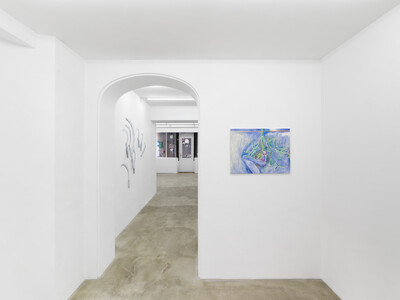
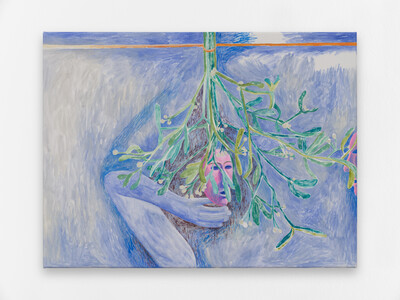
Agnes Scherer, Masks under a mistletoe (diurne), 2025, acrylic on canvas, 51.5 × 68 cm, unique
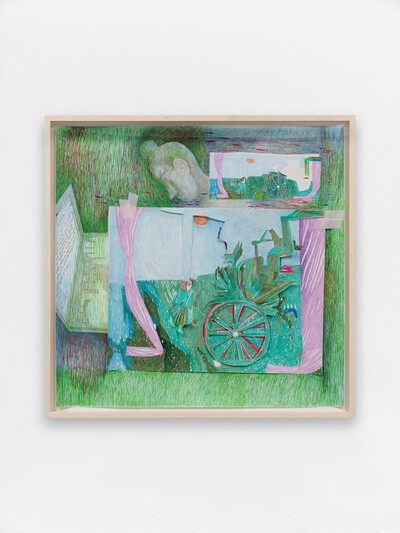
Agnes Scherer, Girl with wheel (working on sth else), 2025, fully light resistant ink on paper and Chinese rice paper imitating tape, 71.6 × 73.5 cm (unframed), 77 × 79 cm (framed), unique
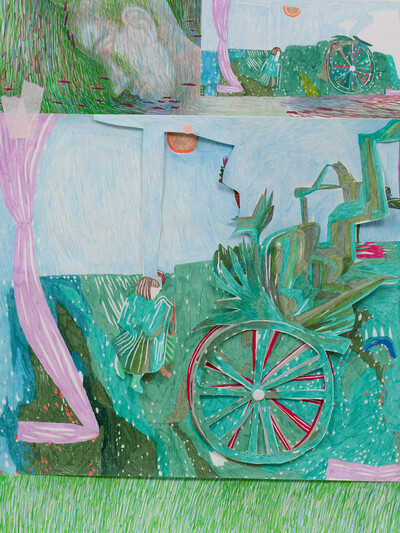
Agnes Scherer, Girl with wheel (working on sth else) (detail), 2025
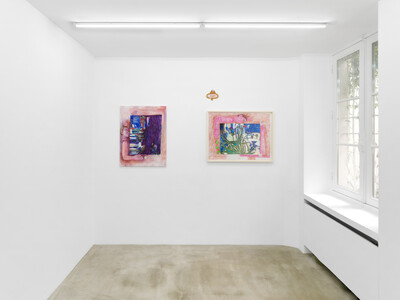
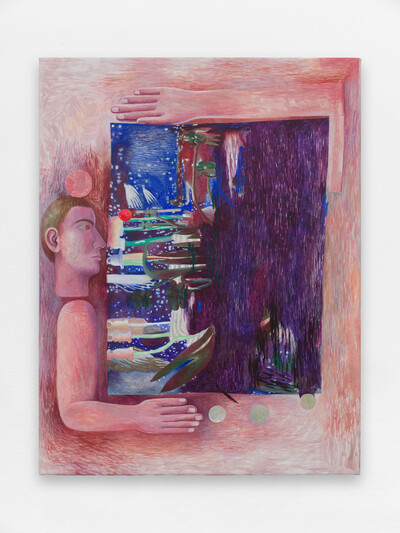
Agnes Scherer, Dot dot dot, 2025, acrylic on canvas, 82.3 × 63.5 cm, unique
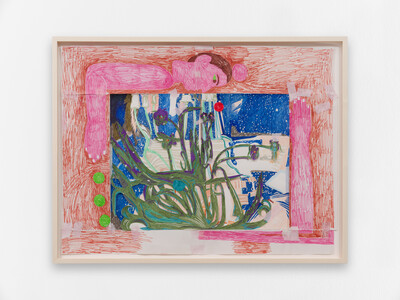
Agnes Scherer, Violets and galaxy, 2025, fully light resistant ink on paper and Chinese rice paper imitating tape, 63.5 × 84 cm (unframed), 69 × 90 cm (framed), unique
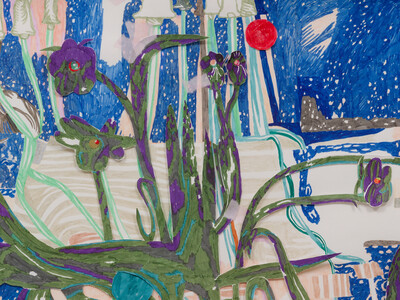
Agnes Scherer, Violets and galaxy (detail), 2025